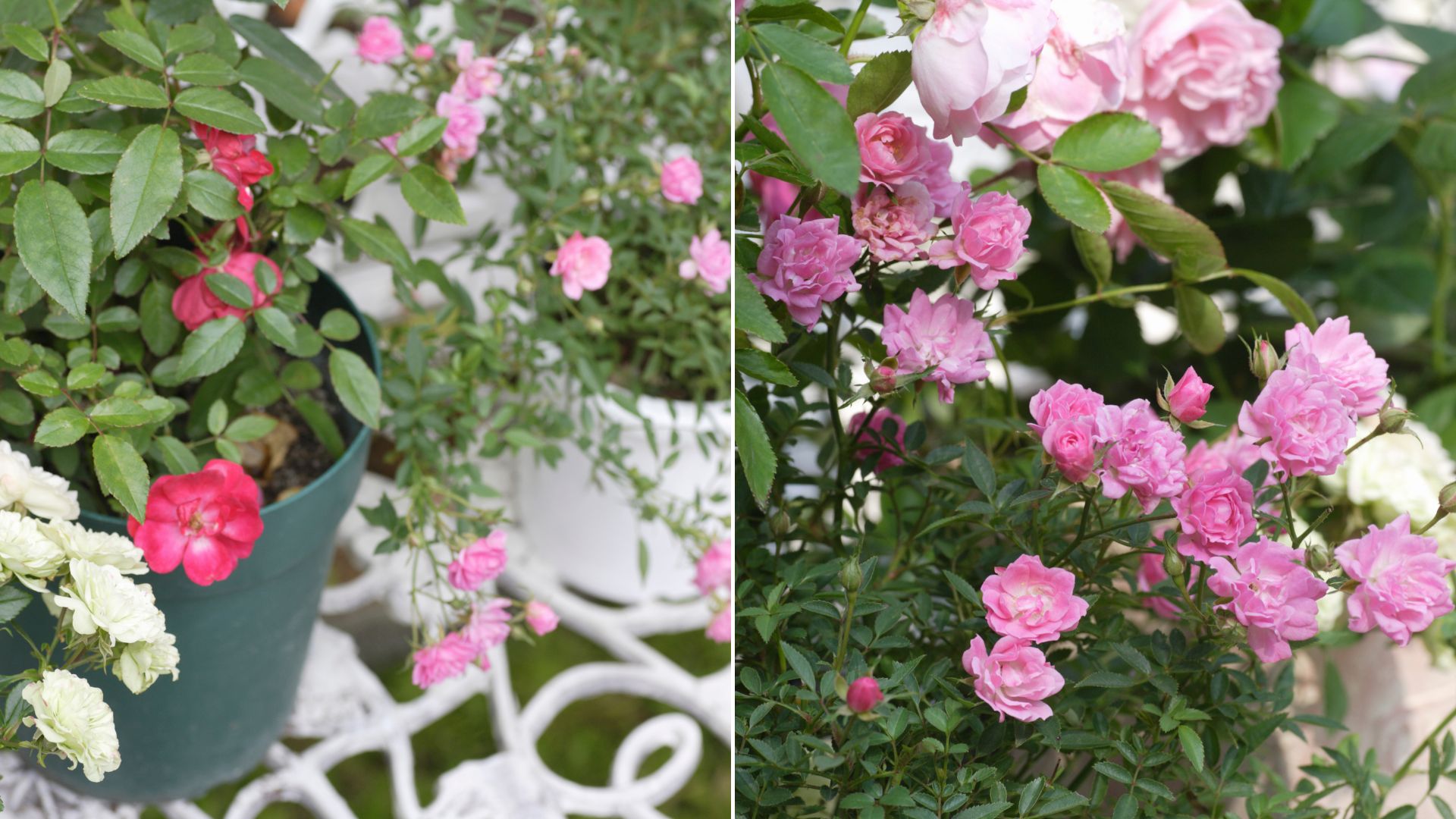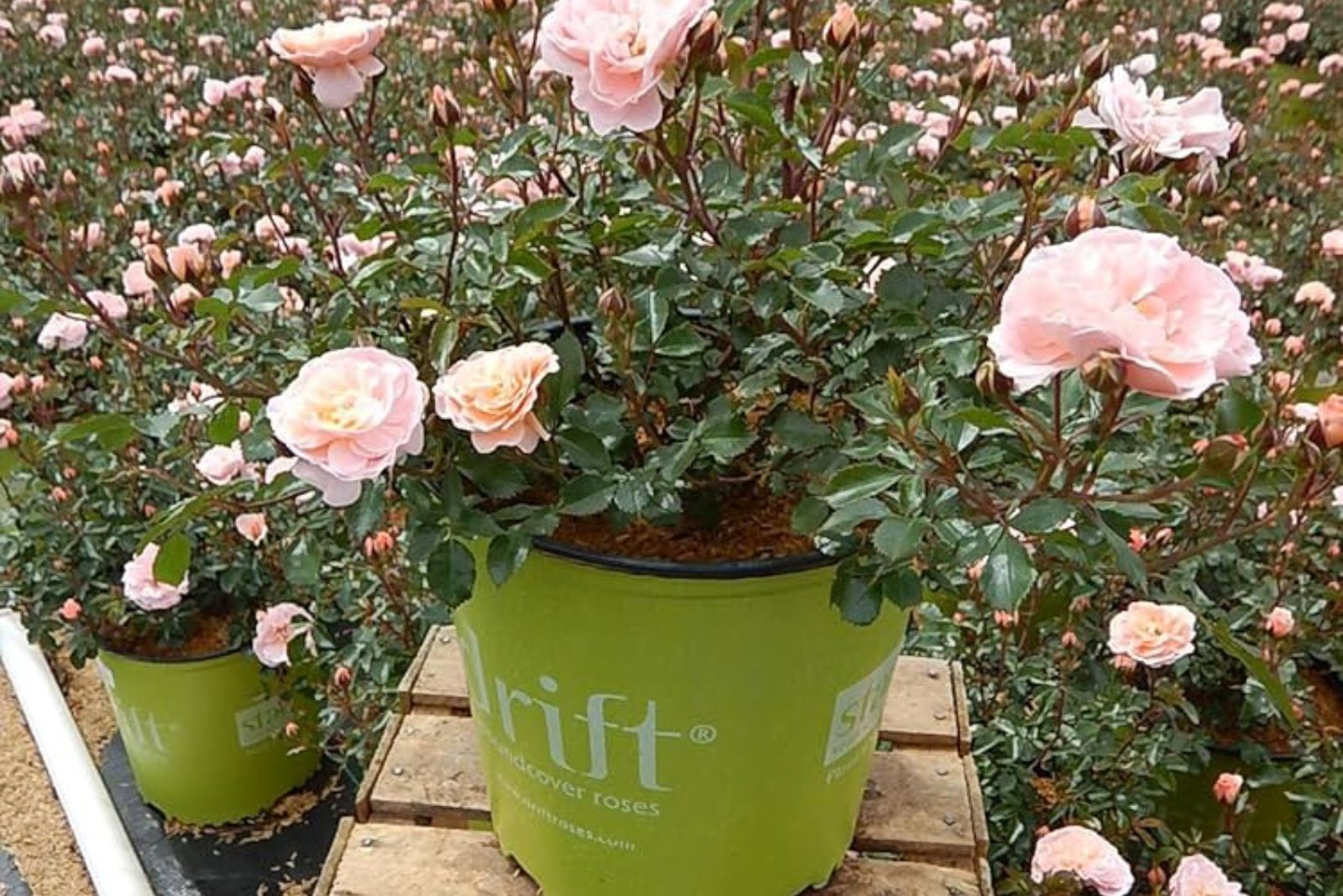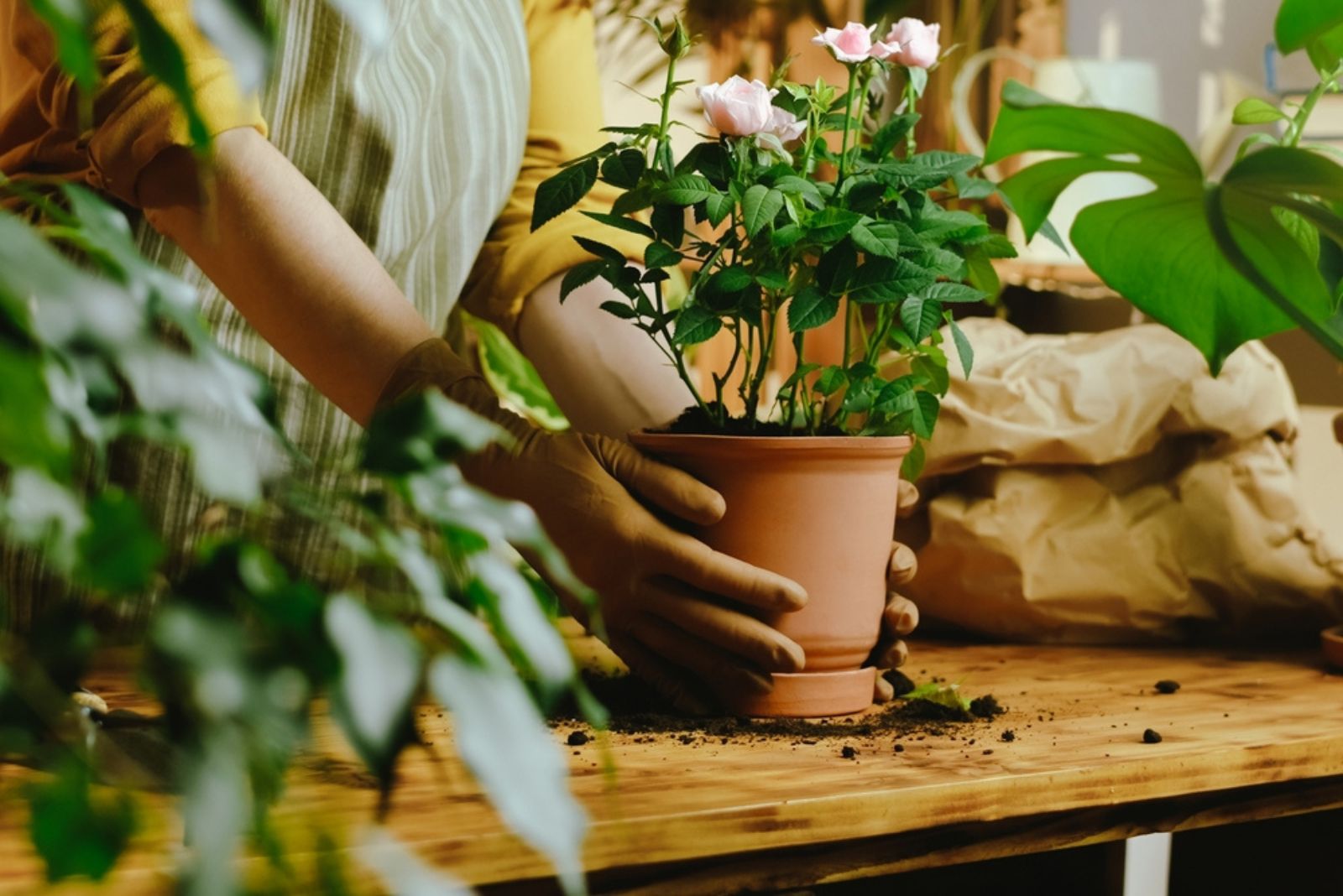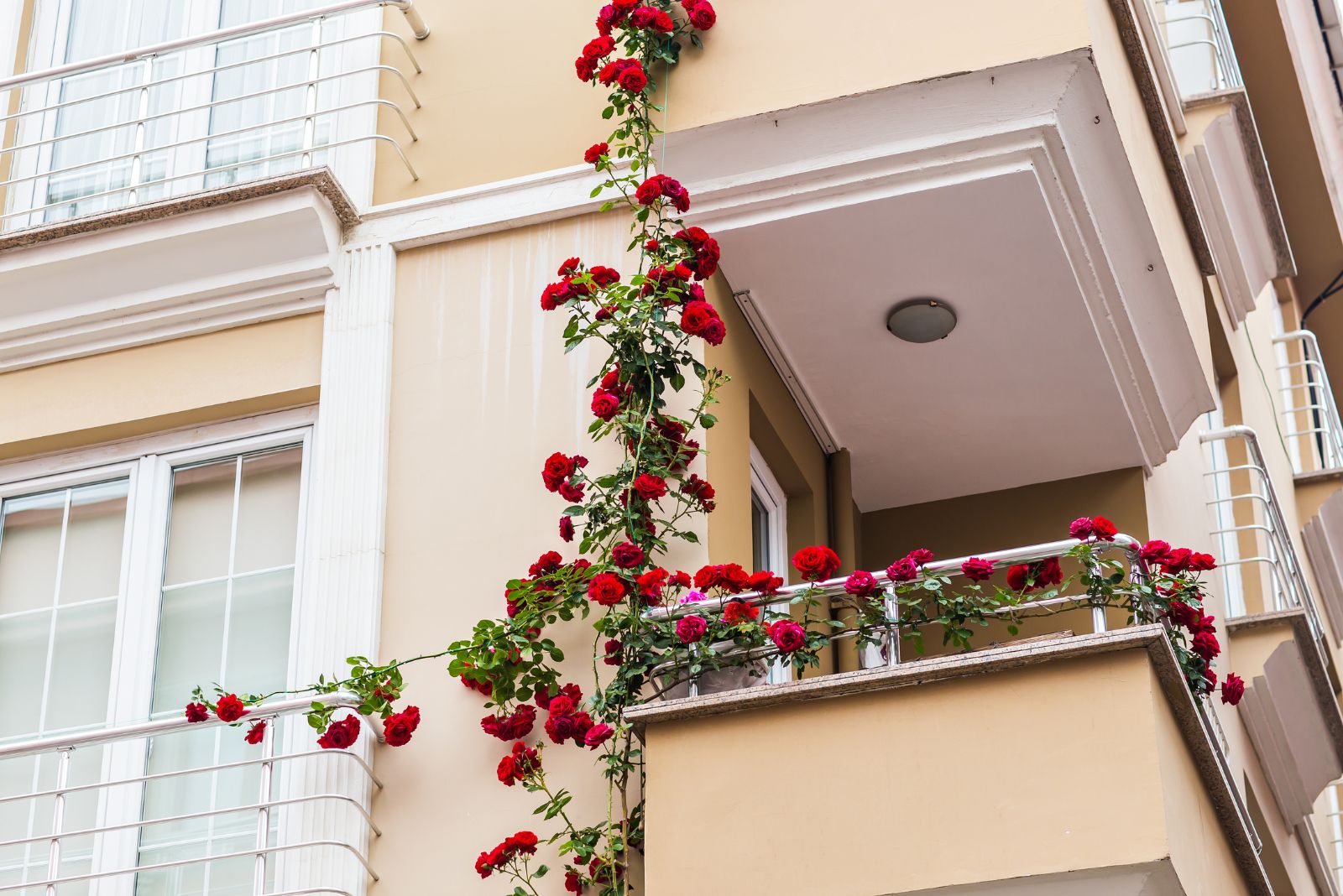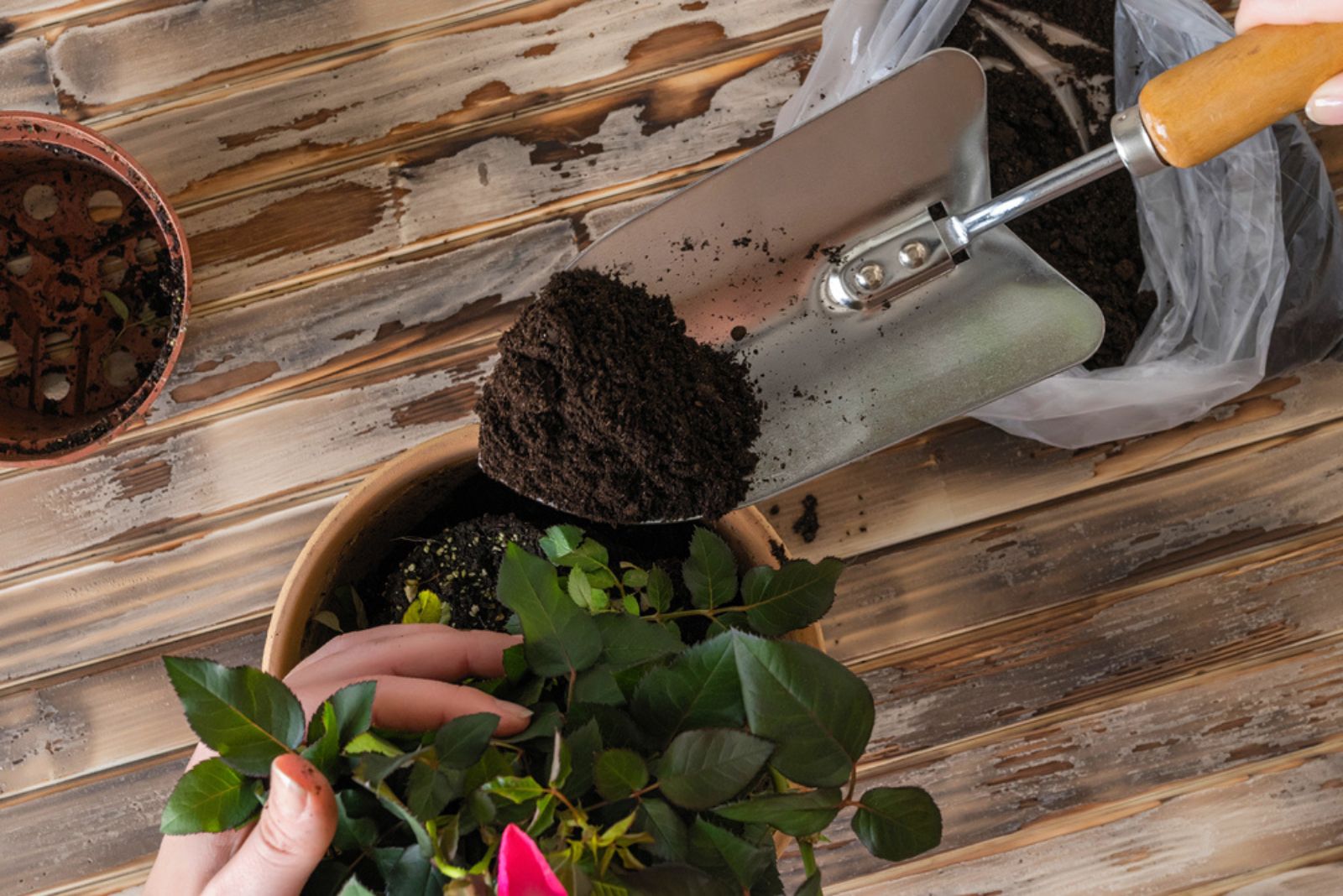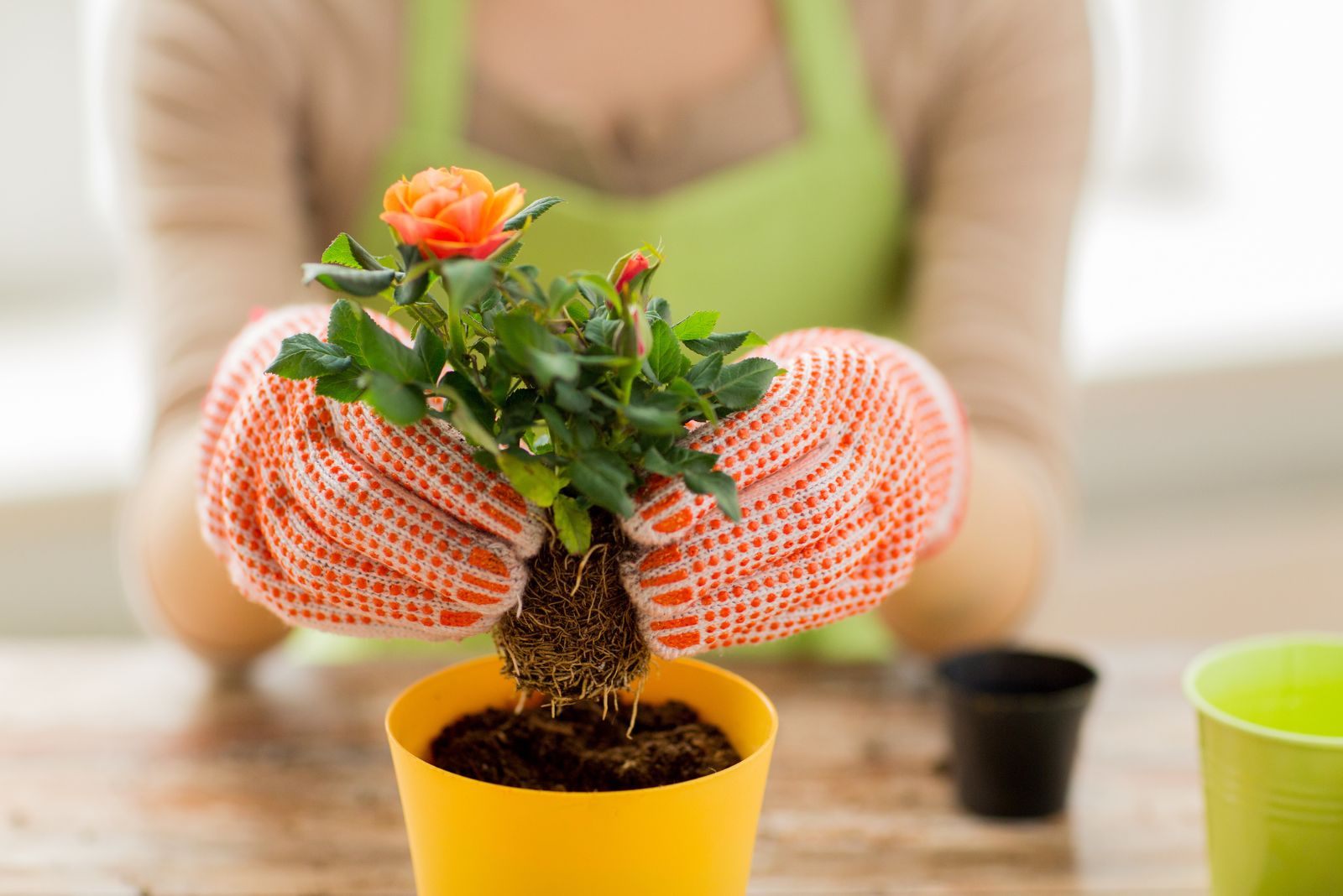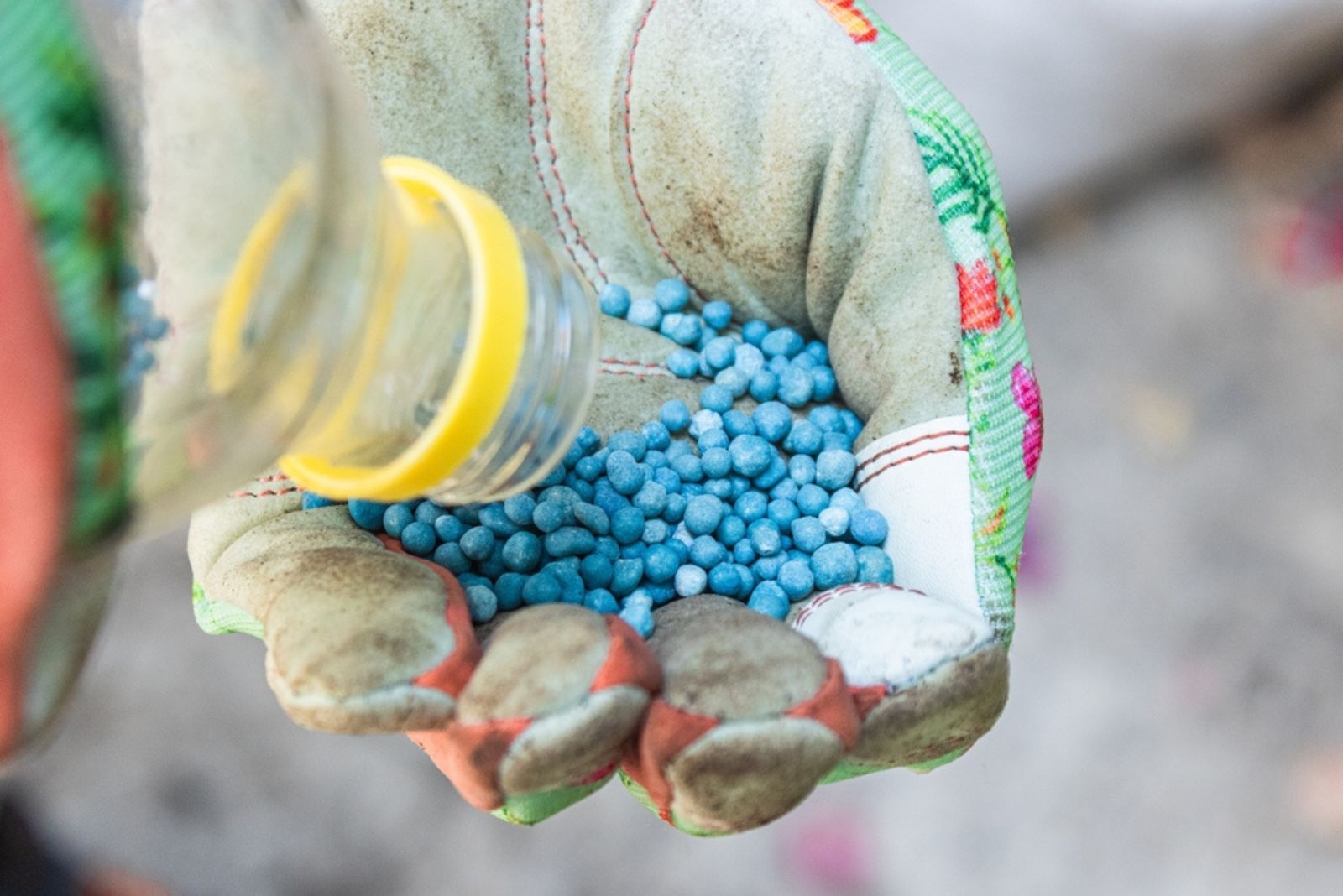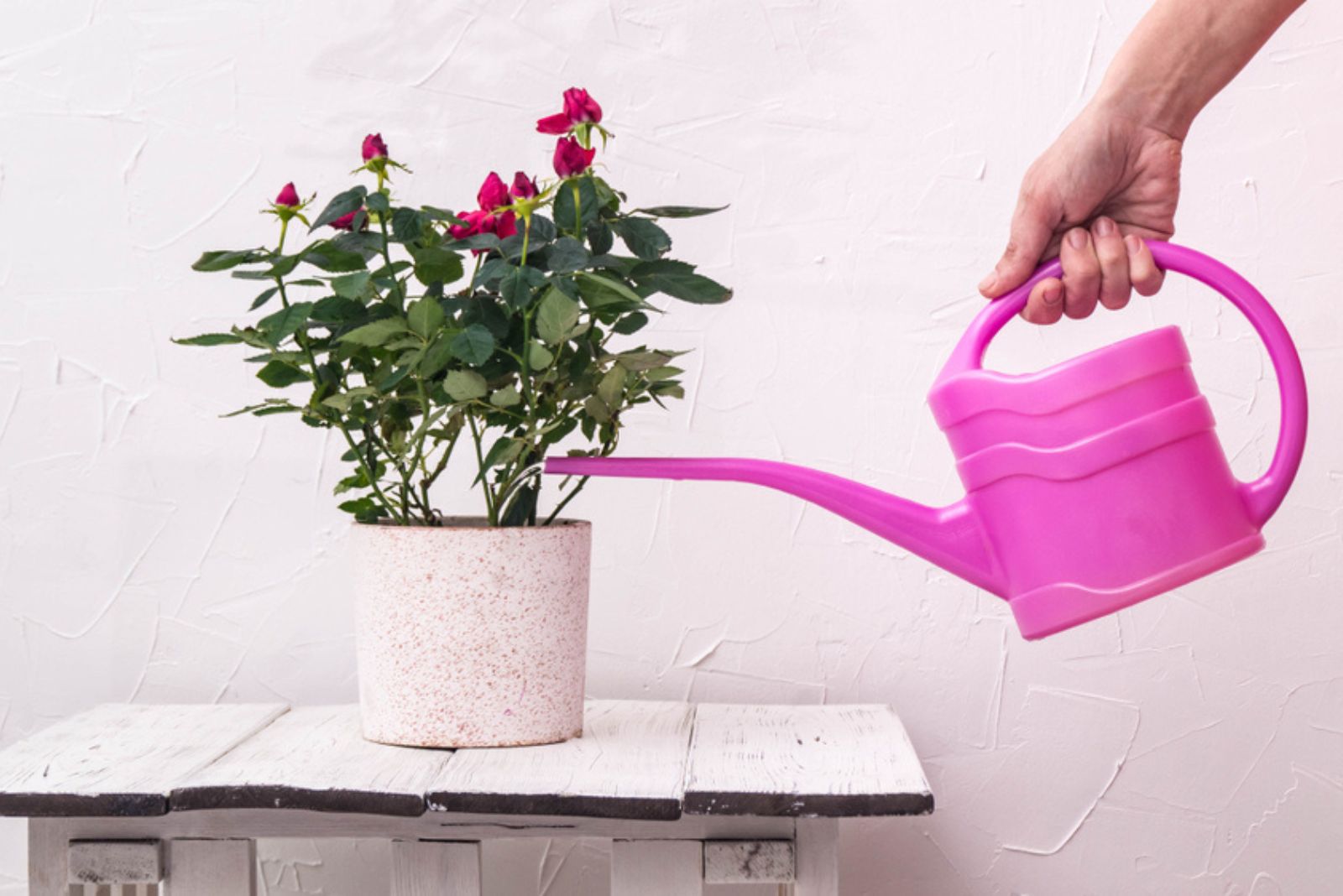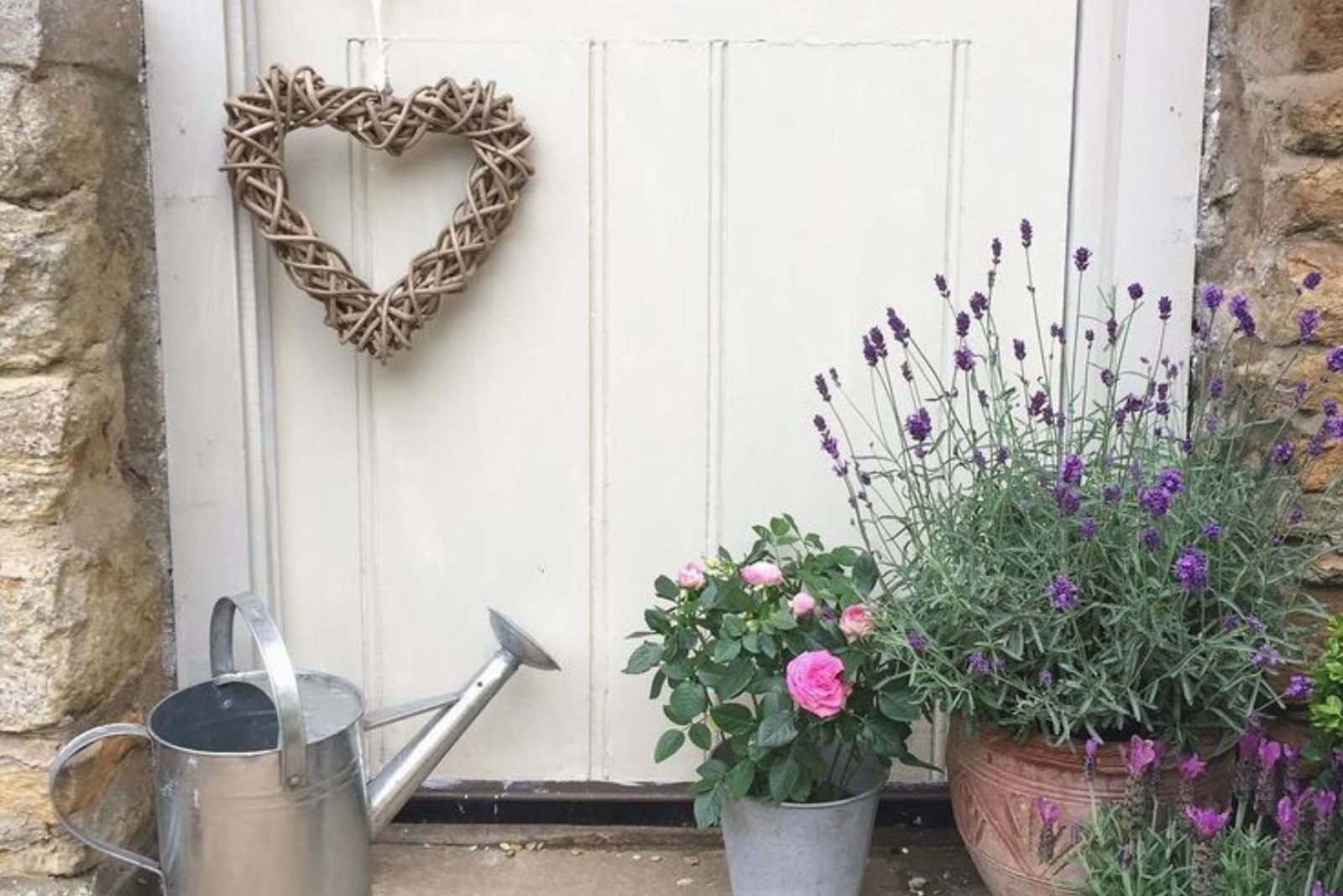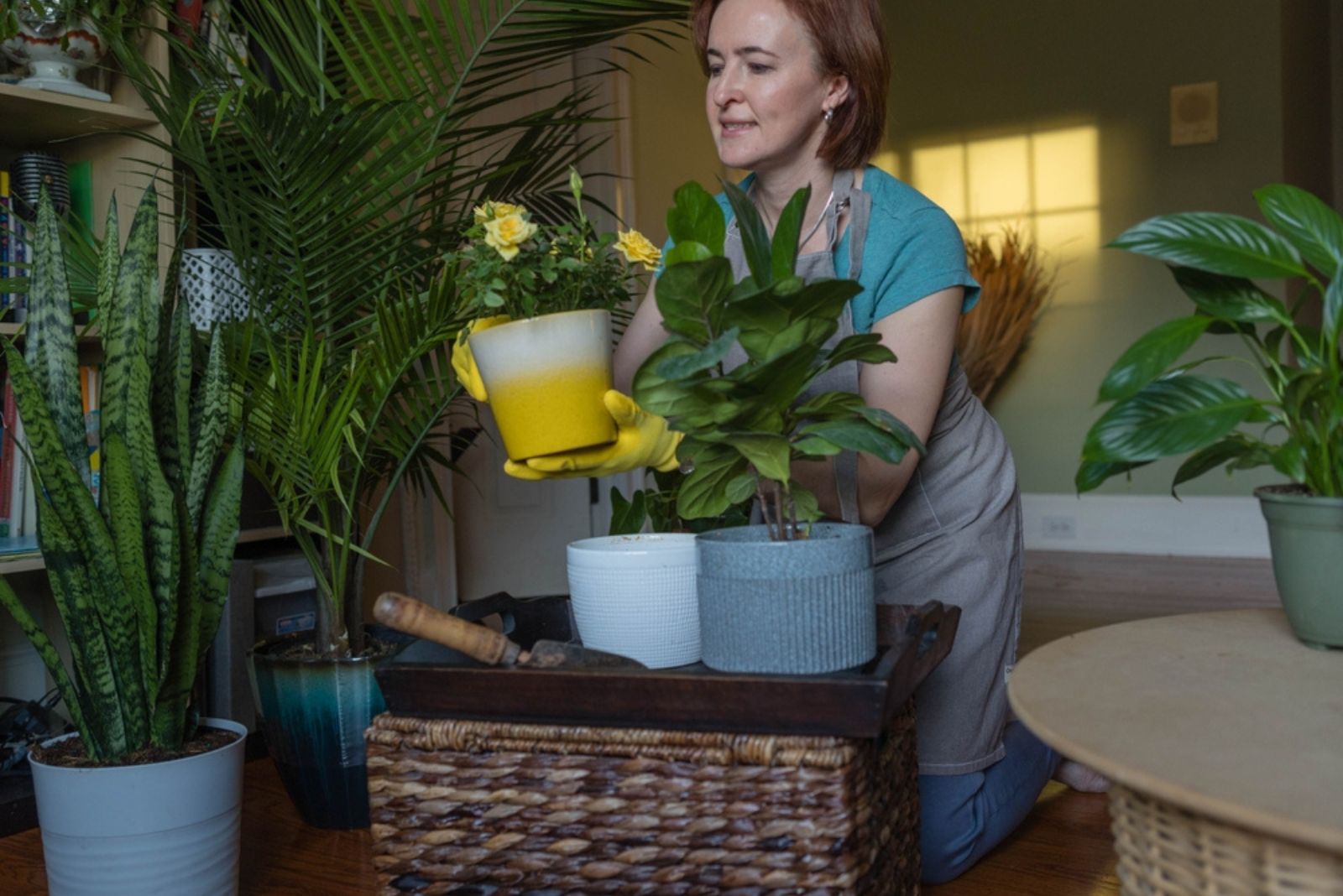If you don’t have enough garden space to plant and grow magnificent roses, you can always opt for container roses!
Whether you have a cozy balcony or a compact garden, these potted beauties can transform any area into a blooming paradise. Most roses grow well in containers if proper plant care is provided, but they won’t reach their full potential size due to limited space for root growth.
Nonetheless, they still offer you a long-blooming season with the most elegant flowers!
In this article, we are going to cover how to properly grow roses in containers. So, let’s get started!
1. Choose The Right Variety
There are a couple of things that you should consider before getting started. First of all, you have to take into consideration the USDA hardiness zones in your region – in case you live in colder climates, opt for winter-hardy varieties.
Second of all, you have to consider the size and growth habits of roses. It might be tricky to grow climbing roses in containers, although it’s not impossible. These are the options you can choose from:
• Standards – these need around 10 to 15 gallon pots to properly grow. There are many different options to choose from, but ‘Peace’ and ‘Ebb Tide’ are the most frequent ones.
• Groundcover roses – perfect choice for containers or hanging baskets. The most popular varieties are ‘Apricot Drift’ and ‘Flower Carpet Pink Supreme’.
• Hybrid teas – also ideal for pots since they have a v-shape and produce legged canes. ‘Julia Child’ and ‘Pope John Paul II’ are recommended for container gardening.
• Small shrubs – bushy types of roses that can be grown in pots. Popular options are ‘Cinco de Mayo’ and ‘Roald Dahl’.
Find your special rose here: 17 Tough Roses That Even Beginners Can’t Kill
2. Choose The Right Container
Opt for a large enough container to accommodate your roses while allowing room for growth. Ensure the container has drainage holes to prevent waterlogged soil. Smaller roses are typically planted in 2- to 5-gallon pots, while larger roses grow well in 10- to 15-gallon pots.
You should also think about the material when it comes to choosing the right container. Lightweight, durable materials like plastic or fiberglass are ideal for easy moving, as container roses may need to be relocated for the best sunlight.
If you grow your roses in terracotta pots, then you will have to water them more frequently as the water evaporates quickly.
3. Find The Perfect Spot
Luckily, you can easily relocate your container roses wherever you want. However, it’s important to place them in a spot where they can receive about 6 to 8 hours of full sun daily.
Ensure good air circulation around the plants to prevent diseases, especially if you are growing small shrubs. Climbing roses will need something to climb on, so keep that in mind as well.
Generally, you can put them anywhere you want as long as they receive enough sunlight. Patios, balconies, walkways, around the garden… the options are endless!
If you need some ideas, check out these 9 Captivating Ideas For Landscaping With Knock Out Roses.
4. Prepare Your Roses
Proper preparation is essential. This might differ between bare-root and container roses. If you bought bare-root roses, these need to be soaked before planting. Leave them soaking in water for about 12 hours.
If you have a container rose, simply water it before transplanting it to a new container. They will adapt better to their new environments when they have received a fresh watering.
5. Prepare The Soil
Your container roses will thrive in a fertile, well-draining soil. High-quality potting soil mixed with some compost and perlite provides good drainage and the nutrients that your roses need.
Also read: Are Coffee Grounds Good For Roses? All The Answers
6. Plant Properly
It’s also really important to plant your roses properly. When planting, position them in the container so that the graft union (the swollen area where the rose is grafted onto the rootstock) is just above the soil line.
This prevents the rootstock from producing shoots that can overtake your desired rose variety, and also protects the crown from extreme temperatures and winds.
7. Fertilization Is Key
Roses need an extra boost in order to grow and thrive, especially if you are growing them in containers. If your potting mix already contains a slow-release fertilizer, there’s no need to add anything else.
Let the roses settle in and once they start developing new leaves, you can apply alfalfa fertilizer or liquid seaweed. Stop applying fertilizers about 6 weeks before the last frost date. Apply a slow-release fertilizer again once the spring arrives.
If your roses aren’t blooming even though you are using fertilizer, then constant watering might be washing it out. You can also use an organic foliar spray to provide some extra nutrients and encourage blooming.
8. Follow The Right Watering Schedule
You have to be careful when watering container roses. Maintain consistent soil moisture, but don’t let the container sit in standing water or you’ll end up with wilting roses.
Since many factors like temperature and humidity affect watering needs, I would suggest you check the soil everyday to see if it’s dry. If the soil is moist, check again in a day or two.
Water your container roses deeply when the top inch of soil feels dry. Avoid getting the leaves wet to reduce the risk of diseases.
9. Pruning
Container roses grow slower and they don’t need frequent pruning. Get rid of any discolored or diseased foliage and prune back any canes that grow inwards. Cutting back to an outward-facing leaf node will improve shape and promote new growth.
The best time to prune your container roses would be in early spring, when roses are just starting to push new leaves. However, you can also do it in early fall if you missed the spring pruning. Remember to always use sterile pruning shears!
10. Pests & Diseases
Even though most roses are hardy, they are still susceptible to some pests and diseases. Keep an eye out for common rose pests like aphids, spider mites, and rose slugs. Regularly inspect your roses for any signs of trouble.
If you notice any pests, you can get rid of them with neem oil or insecticidal soap. Disease-resistant rose varieties can help minimize the risk of fungal diseases, but it’s still essential to monitor for issues like powdery mildew and black spot.
11. Repotting
Soon enough, your container roses will need repotting. Constantly dry soil, stunted growth, and roots coming out of drainage holes are often signs that your potted roses need a new home.
Move your roses to a slightly larger pot and always use fresh soil and compost when repotting. If you aren’t moving the pots, top them off frequently with new soil and compost.
You might also be interested in: 12 Interesting Facts About Roses That Will Blow Your Mind
12. Companion Planting
Although you are growing roses in containers, they might still benefit from companion planting. You can underplant some small-statured plants that can serve as mulch, or you can add some flowering plants to make it look fuller.
Marigolds, lavender, lilies, and alyssum are some of the best companion plants for roses. In case you are growing a groundcover rose, you can combine it with some stunning Pink Muhly grass to create beautiful scenery.
13. Overwintering
If you live in a region with cold winters, container roses will need protection. Move the containers to a sheltered area, like a garage, and cover them with insulating materials such as burlap or straw.
Don’t forget to water them as they are not exposed to rain or snow. Keep in mind that you should not bring them in the house because they won’t go dormant; and they need dormancy to rest and build up energy for the next season.
You might also be interested in: Why Do Roses Have Thorns? The Answer Might Surprise You!

